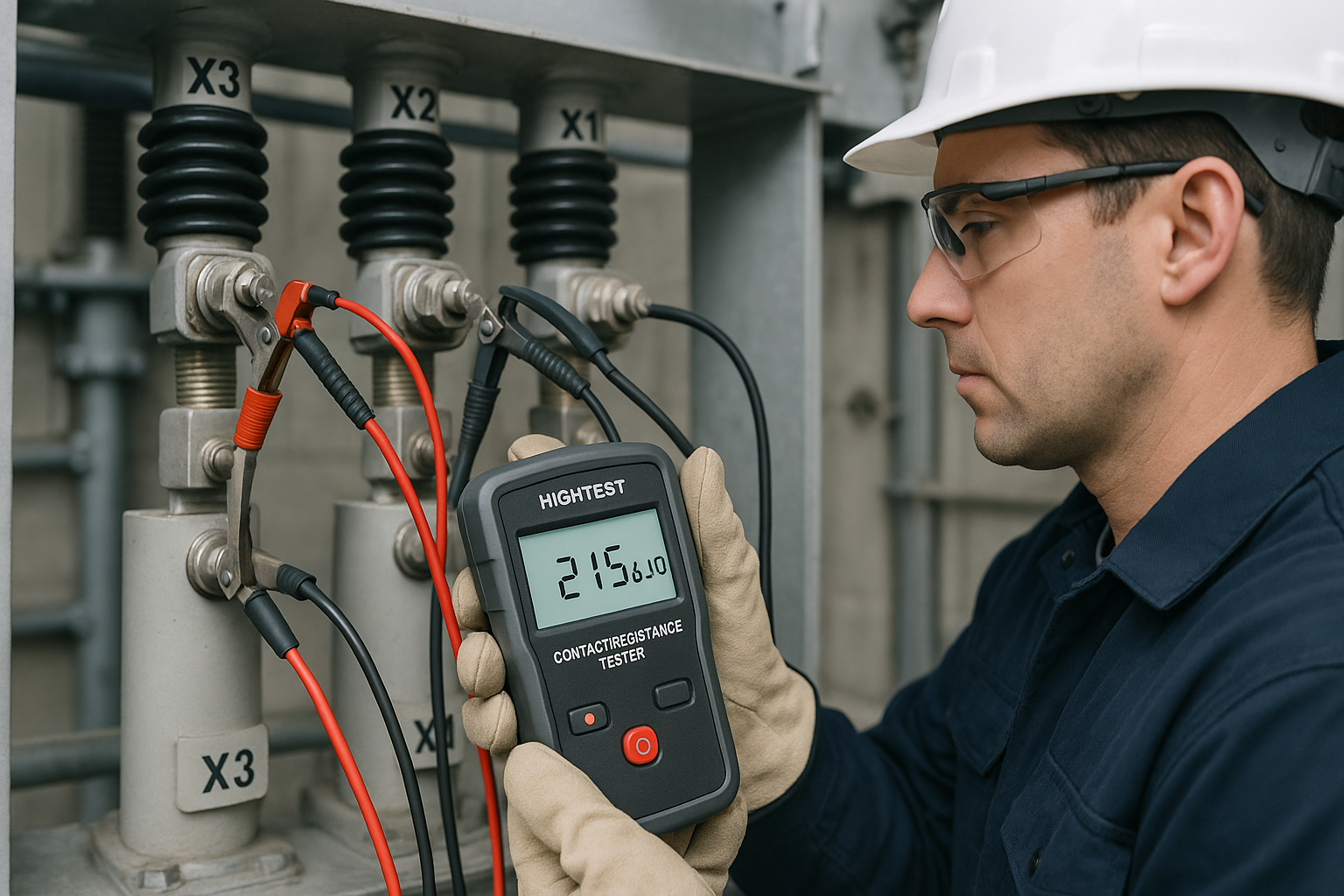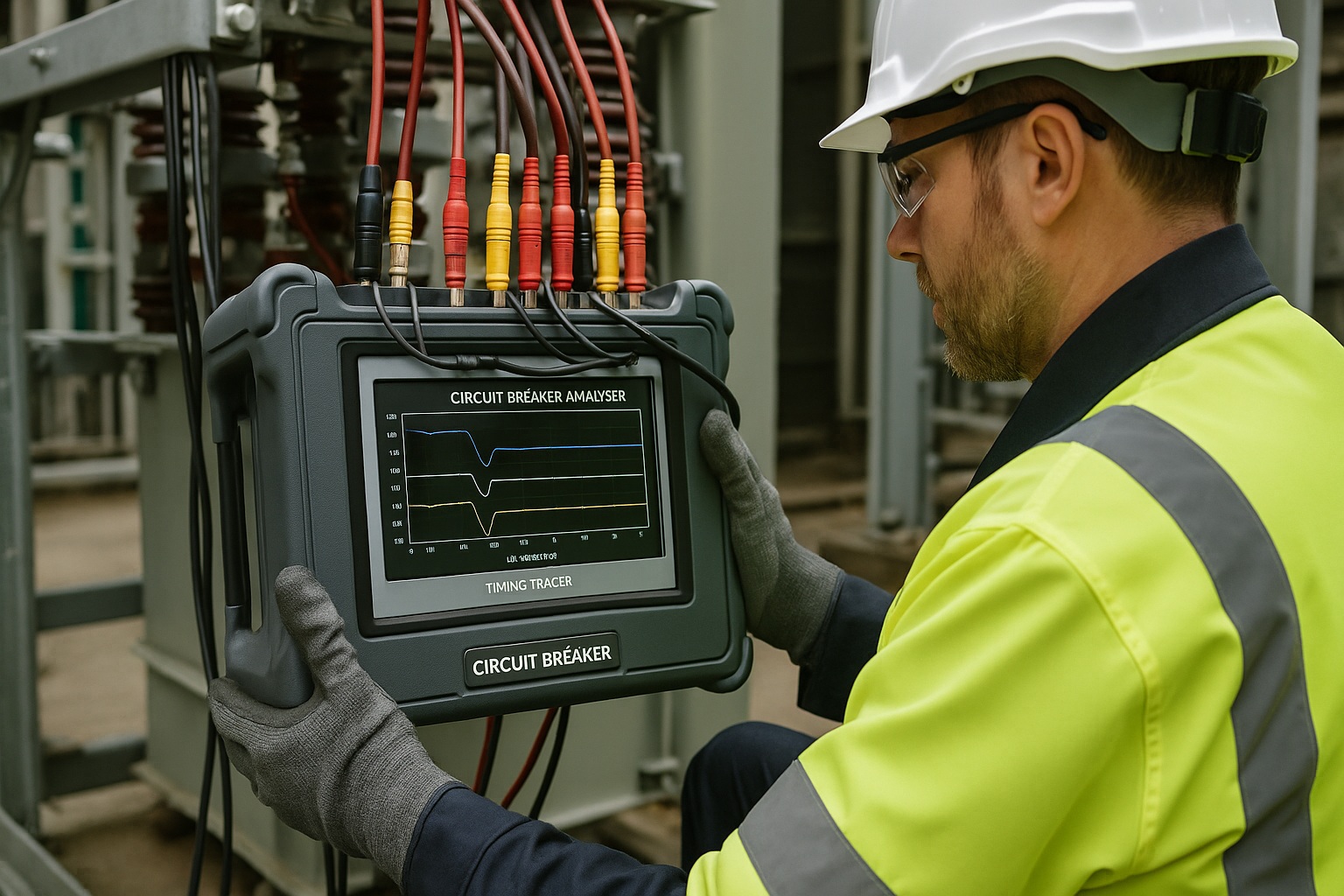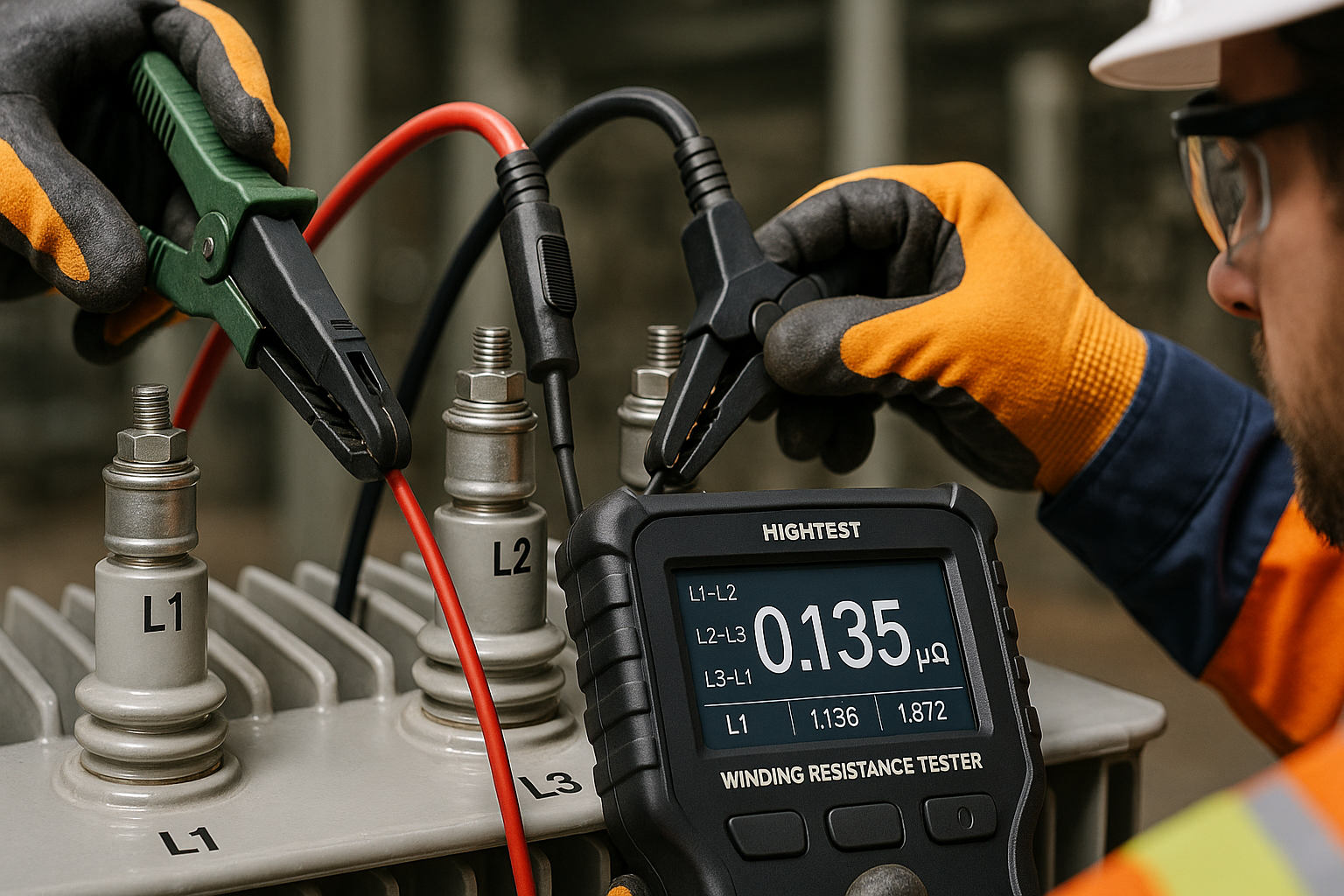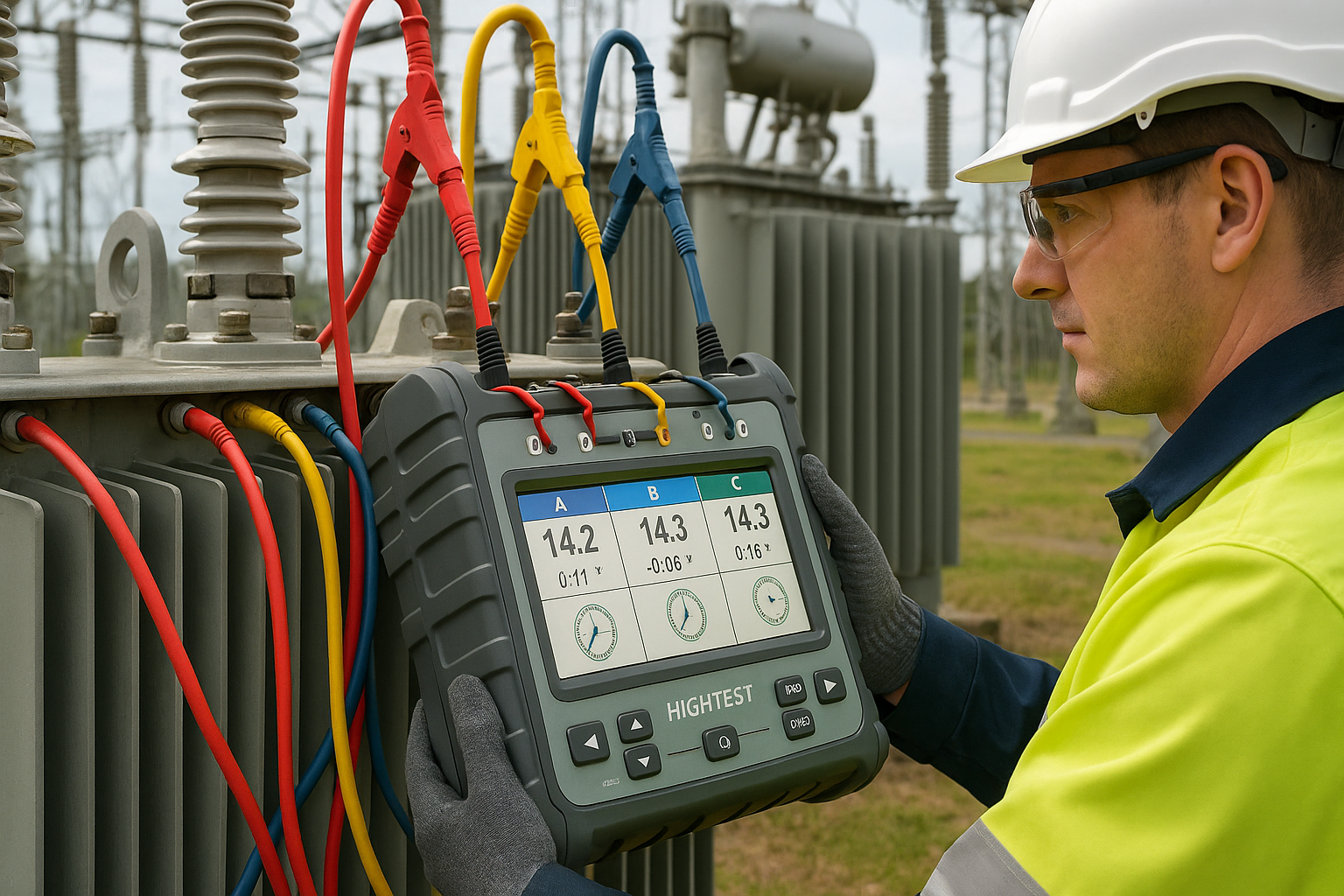For any technician or engineer involved in transformer maintenance, the DC winding resistance test is a fundamental diagnostic tool. It provides critical insights into the health of windings, tap changers, and internal connections. However, what happens when the readings refuse to stabilize or show erratic values? These irregularities can be frustrating and time-consuming, but they are almost always explainable.
This guide provides a systematic approach for troubleshooting irregular readings in the field, helping you diagnose the root cause efficiently and accurately.
1. The Temperature Problem: The Most Common Culprit
The resistance of copper or aluminum windings is highly dependent on temperature. A stable measurement is impossible if the winding temperature is still changing.
- Cause: The transformer was recently energized or de-energized, causing its temperature to be in flux. Even significant changes in ambient temperature during a long test can have an effect.
- Symptoms: Readings drift steadily in one direction (up if the transformer is cooling, down if it’s warming) and take an excessively long time to settle.
- Field Solution:
- Patience: Allow the transformer to reach thermal stability with its surroundings before starting the test. This can take several hours for large power transformers.
- Use Temperature Correction: Always record the winding temperature at the time of the test using an accurate thermometer. Modern test sets, like the HighTest WINRES series, have dedicated temperature input channels and can automatically correct the resistance reading to a standard reference temperature (e.g., 75°C) using the formulas in IEEE and IEC standards. This allows you to compare today’s results with historical data accurately.
2. Residual Magnetism: The “Ghost” in the Machine
When a DC voltage is applied to a winding, it magnetizes the transformer core. If a previous test left the core magnetized, it can interfere with the new DC test current, making it difficult to achieve a stable reading.
- Cause: Prior DC tests (like a winding resistance test) were performed without a proper demagnetization cycle afterward.
- Symptoms: Readings are erratic, fluctuate unpredictably, and may take a very long time to stabilize, especially on lower tap positions.
- Field Solution:
- Demagnetize: Before performing the test, use a dedicated demagnetization function, which is a feature on advanced test sets like the WINRES-20. This function applies a decreasing AC voltage (or stepped DC voltage of alternating polarity) to neutralize the core. Performing this simple step can save enormous time and prevent incorrect diagnoses.
3. Poor Connections: The Simple, Overlooked Issue
The integrity of the test circuit is paramount for accurate low-resistance measurements.
- Cause: Dirt, paint, or corrosion on the transformer bushings or where the test leads are connected. Loose or damaged Kelvin clamps can also be a cause.
- Symptoms: Readings are completely unstable, jumping around randomly, or showing an open circuit.
- Field Solution:
- Clean and Secure: Thoroughly clean the bushing terminals with a wire brush or appropriate solvent before attaching the clamps.
- Check Your Leads: Ensure your test leads and clamps are in good condition. Verify that the current and potential leads of the Kelvin clamps are making solid, independent contact with the terminal. A small investment in maintaining clean, high-quality test leads pays dividends in reliable results.
Conclusion: A Methodical Approach is Key
When faced with irregular winding resistance readings, avoid jumping to conclusions about the transformer’s health. By systematically checking for these common issues—temperature stability, residual magnetism, and connection quality—technicians can efficiently diagnose the problem, correct it, and obtain the reliable data needed for a true assessment. Using a modern test set with built-in temperature correction and demagnetization features further empowers you to perform accurate and efficient tests every time.







